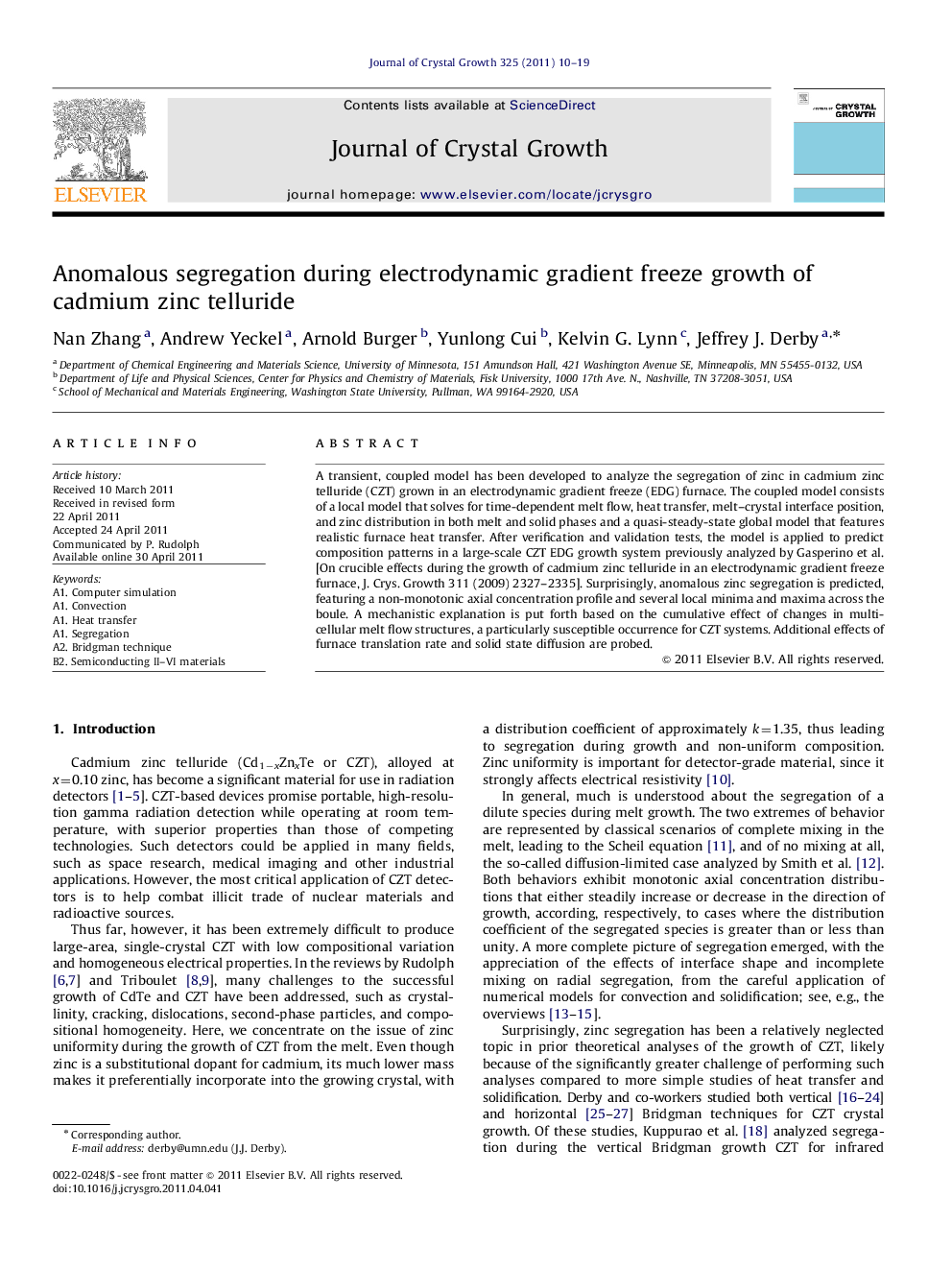| Article ID | Journal | Published Year | Pages | File Type |
|---|---|---|---|---|
| 1792416 | Journal of Crystal Growth | 2011 | 10 Pages |
A transient, coupled model has been developed to analyze the segregation of zinc in cadmium zinc telluride (CZT) grown in an electrodynamic gradient freeze (EDG) furnace. The coupled model consists of a local model that solves for time-dependent melt flow, heat transfer, melt–crystal interface position, and zinc distribution in both melt and solid phases and a quasi-steady-state global model that features realistic furnace heat transfer. After verification and validation tests, the model is applied to predict composition patterns in a large-scale CZT EDG growth system previously analyzed by Gasperino et al. [On crucible effects during the growth of cadmium zinc telluride in an electrodynamic gradient freeze furnace, J. Crys. Growth 311 (2009) 2327–2335]. Surprisingly, anomalous zinc segregation is predicted, featuring a non-monotonic axial concentration profile and several local minima and maxima across the boule. A mechanistic explanation is put forth based on the cumulative effect of changes in multi-cellular melt flow structures, a particularly susceptible occurrence for CZT systems. Additional effects of furnace translation rate and solid state diffusion are probed.
► A realistic, one-way coupling model has been developed to analyze segregation. ► Model verification and validation were demonstrated. ► Surprising, non-classical zinc segregation is predicted for EDG growth.
